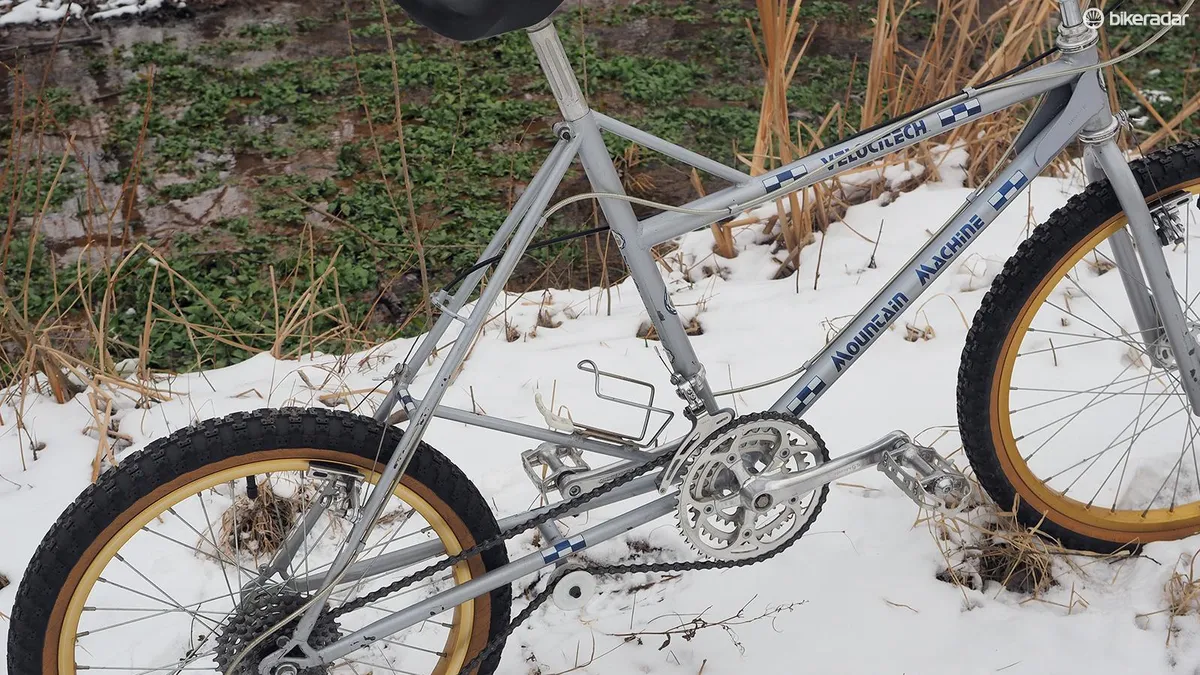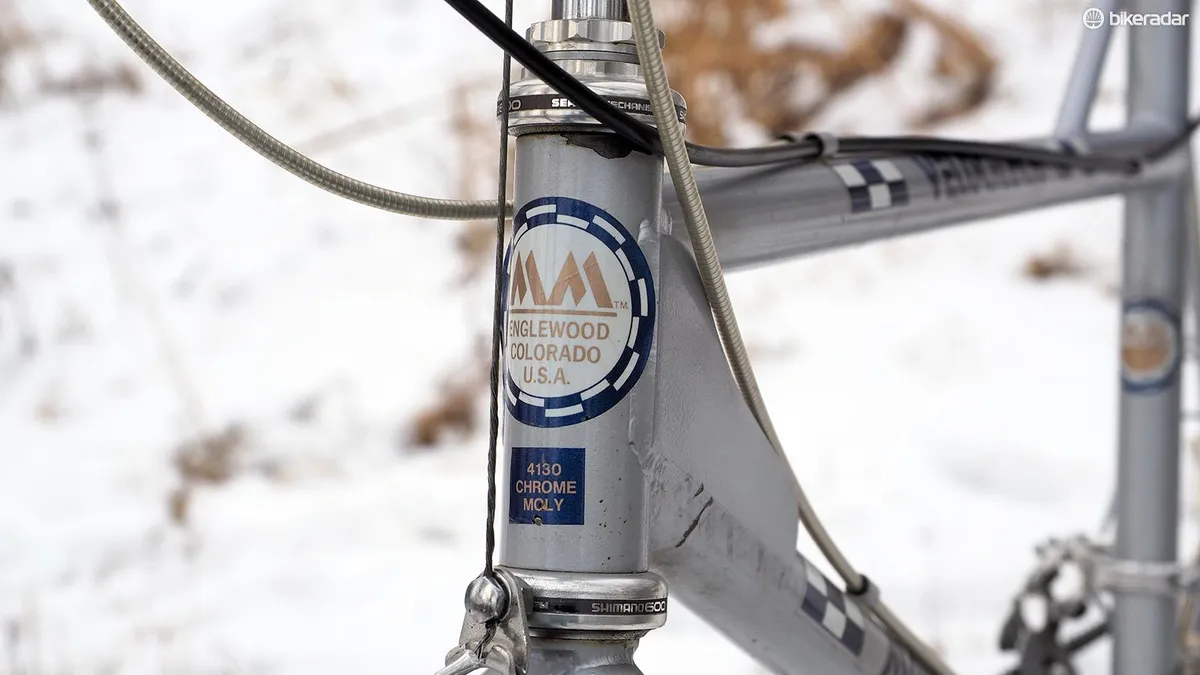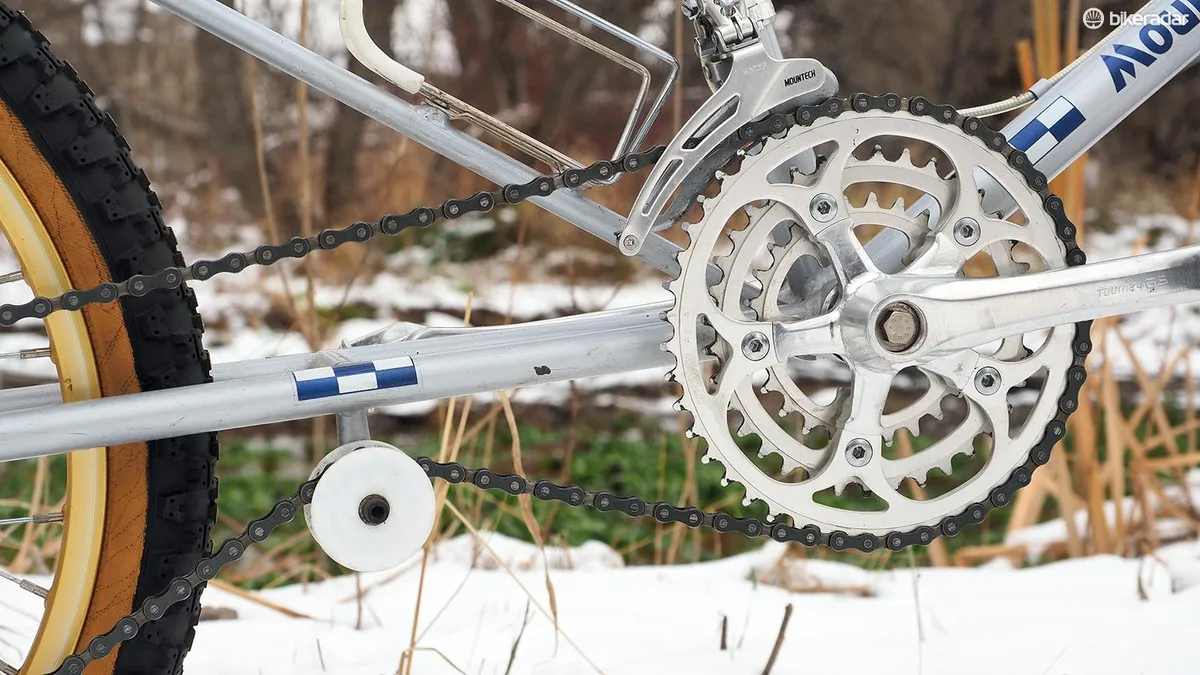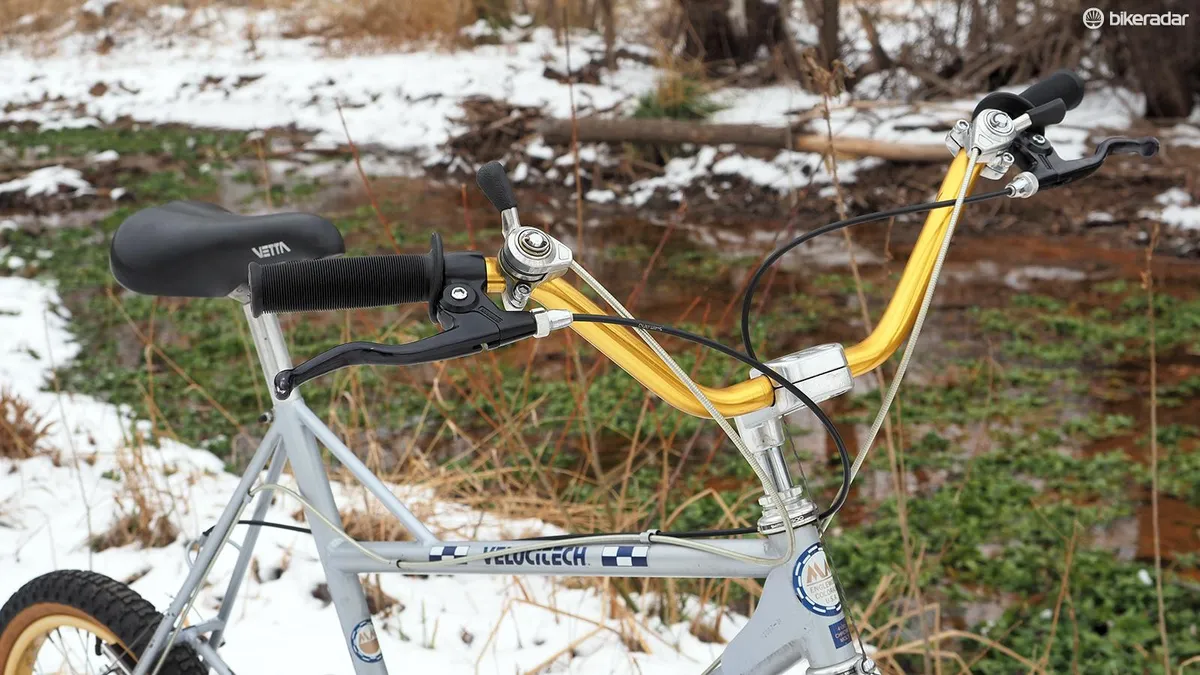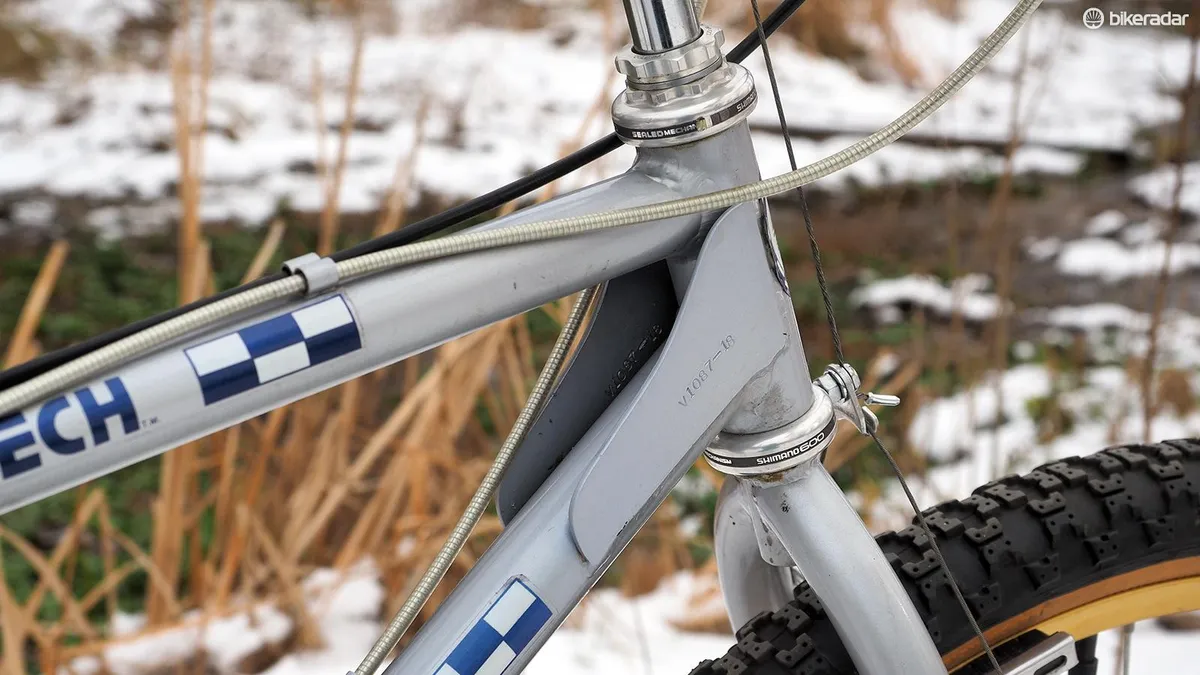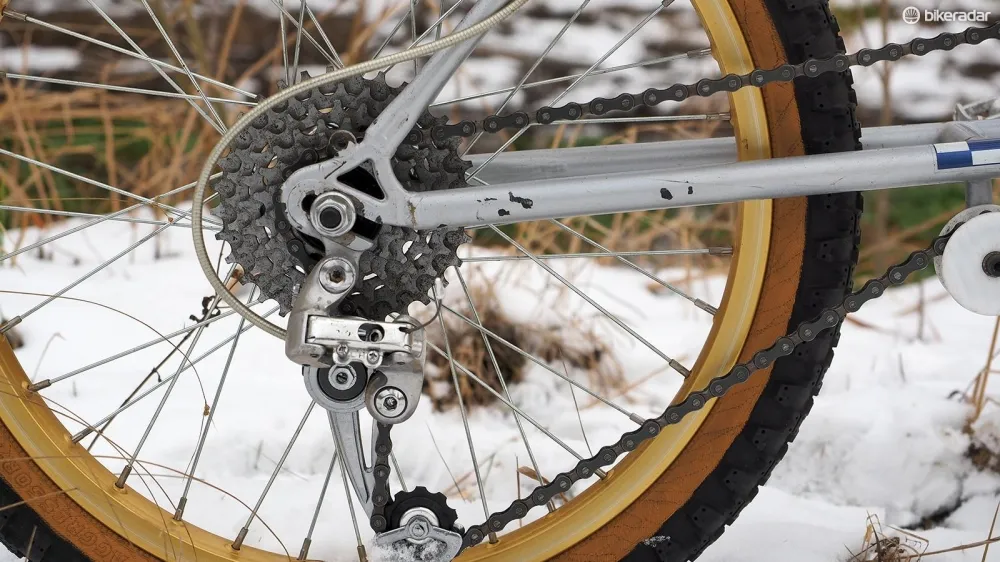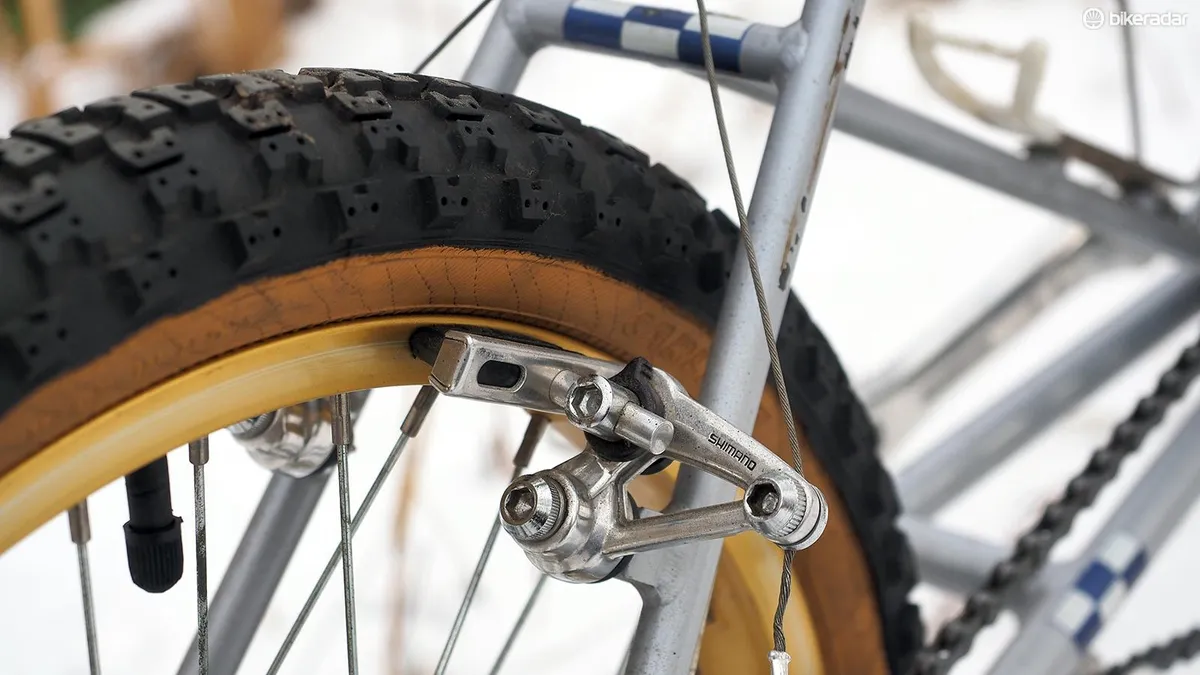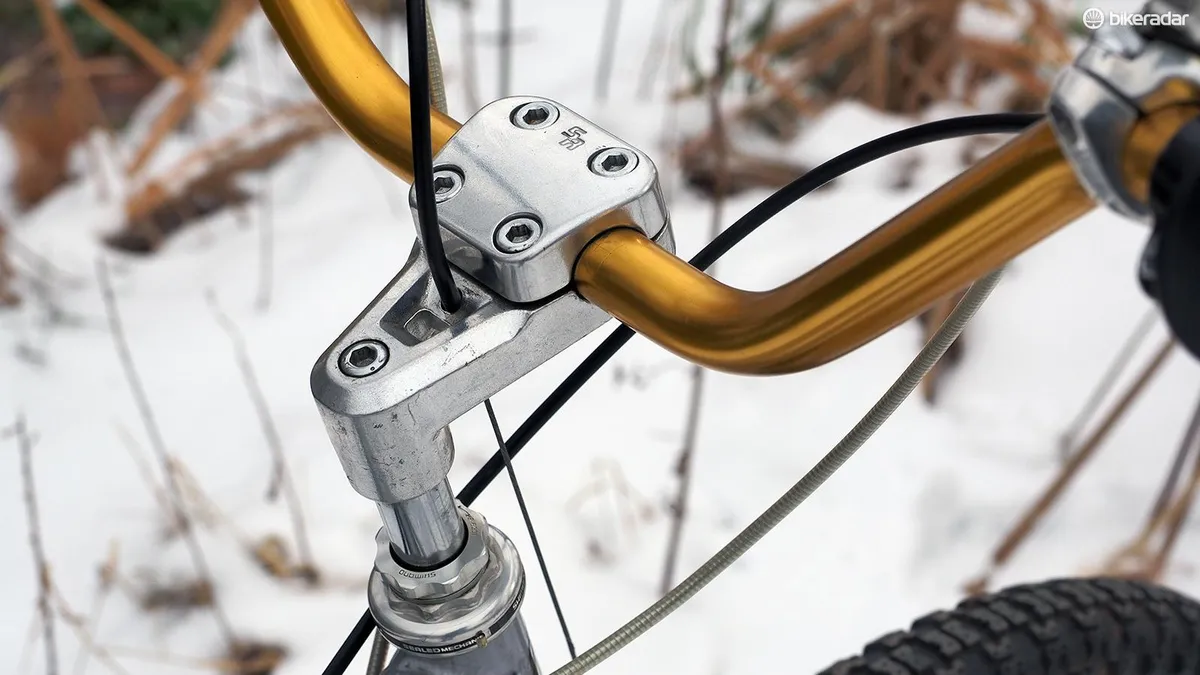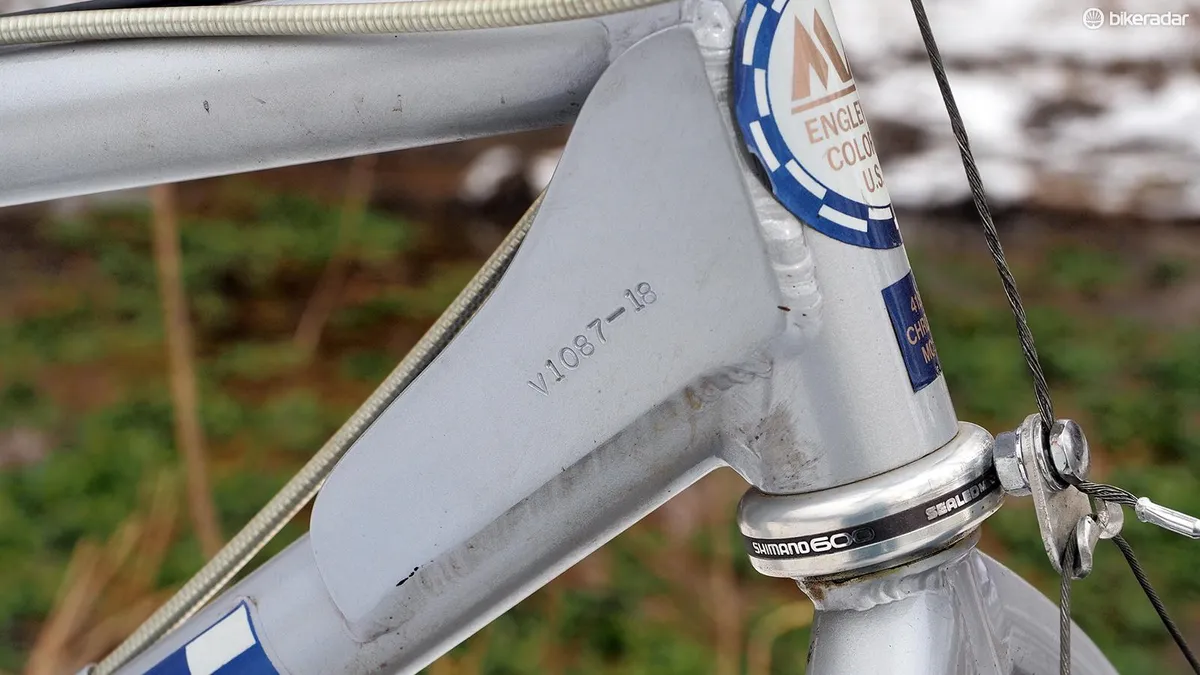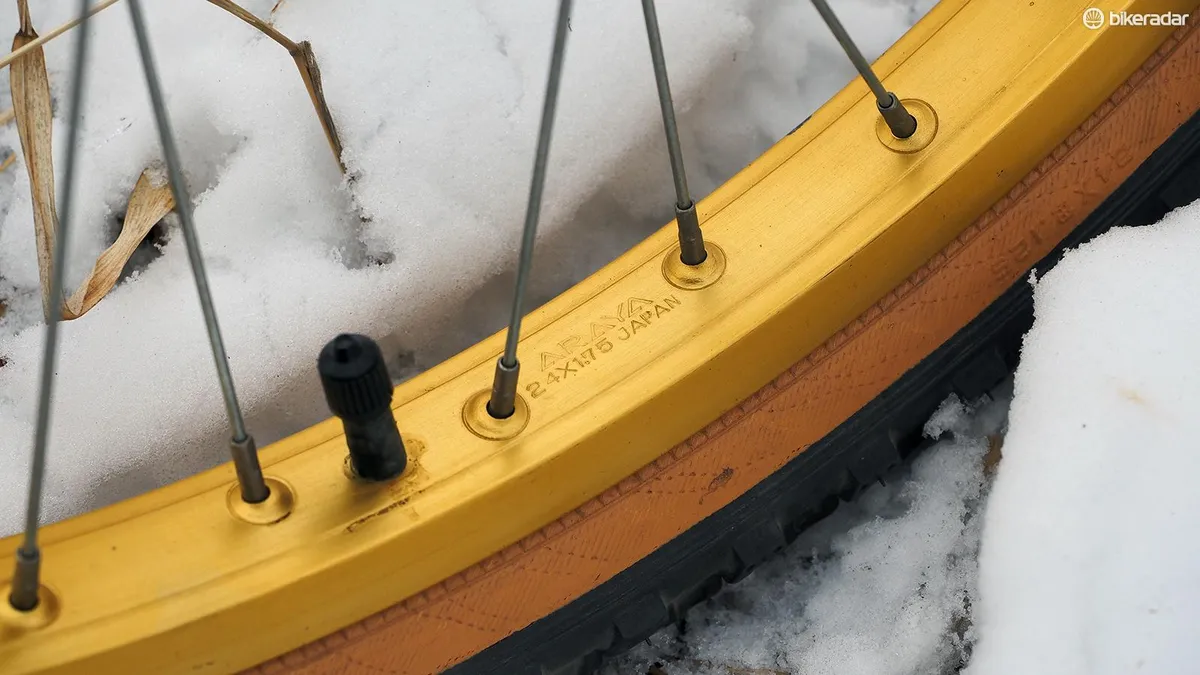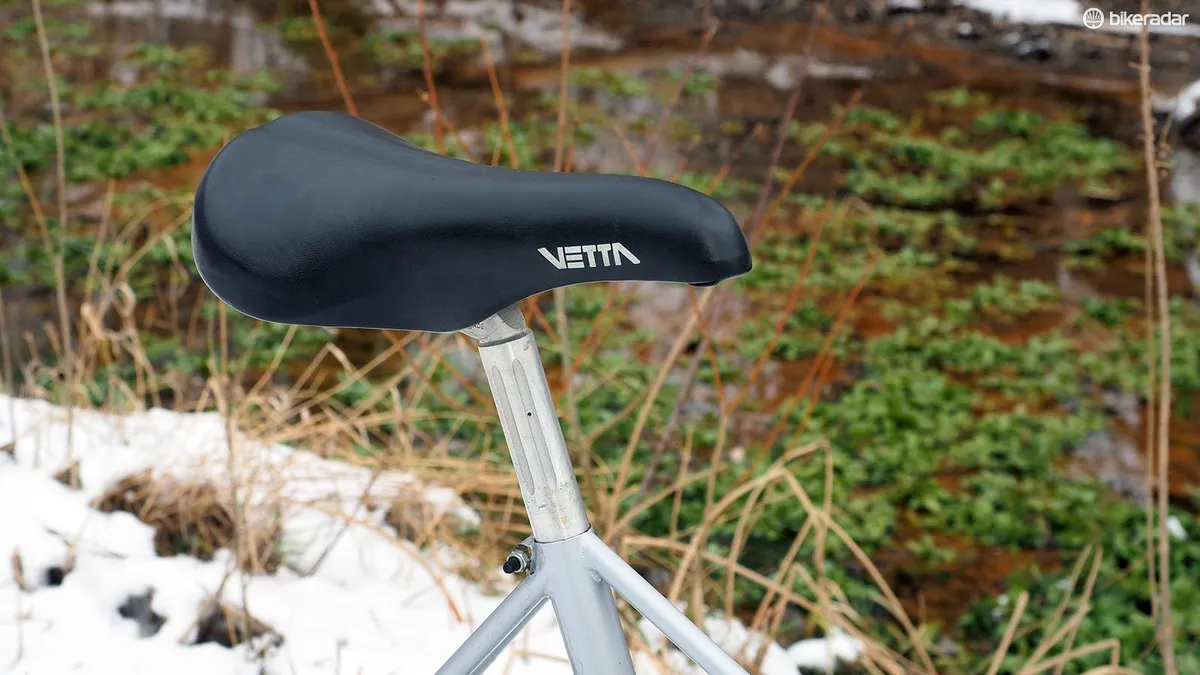If you ride mountain bikes, chances are good that at some point, your Facebook feed has been populated with YouTube clips of insane motorcycle hill climb events – you know, the ones that are impossibly steep with nearly a 100 percent failure rate.
Since all of those machines feature longer-than-usual rear ends, surely it’s a good idea to apply that philosophy to mountain bikes, right? That was the idea behind the decidedly unusual Velocitech Mountain Machine in the mid-1980s – and not surprisingly knowing what we know now, it didn’t work too well.
To say that the Mountain Machine’s frame geometry is a bit different would be quite the understatement. It uses a 20in rear wheel, a 24in front wheel, and the chainstays measure a whopping 530mm (20.86in) – roughly 10cm (3.94in) longer than what’s typically found on bikes today.

Someone once thought this was a good idea
The thinking was that the long rear end yielded better weight distribution on steep ascents, thus producing more consistent rear wheel traction and making it easier to keep the front wheel from lifting off the ground. The smaller rear wheel effectively lowered the gear ratio, too, so the rider could truly inch their way uphill.
Relatively speaking, it was also fairly light at 13.84kg (30.51lb).
As optimized as the Mountain Machine may have been for climbing – at least on paper – the radical geometry had the exact opposite effect when it came to going downhill. This thing was downright sketchy.
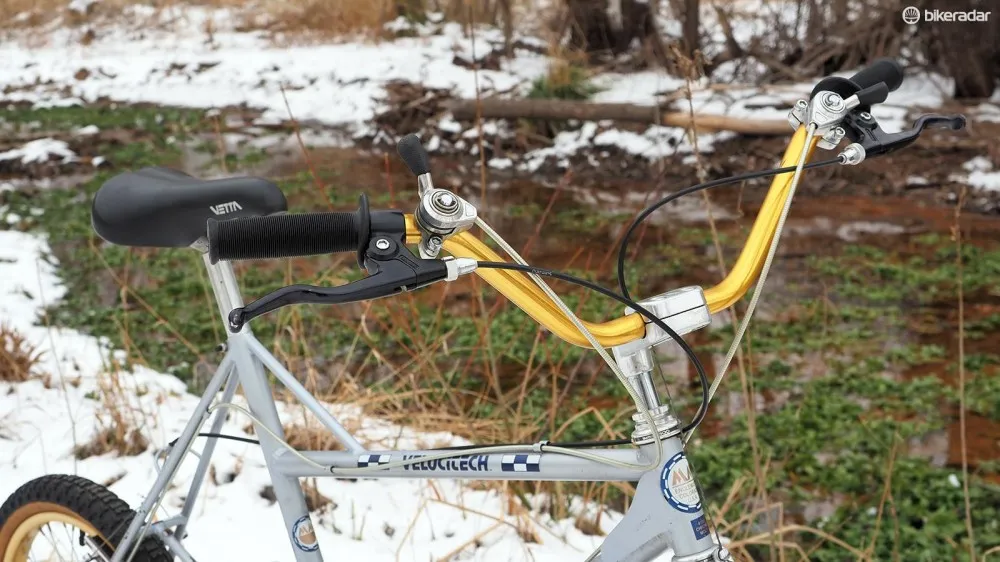
The front end was short and steep
The long chainstays made it harder for riders to shift their weight rearward while descending, for example, and the small wheels weren’t exactly eager to plow through even minor trail obstacles. Meanwhile, the reach up front was uncomfortably short and the head tube nervously steep. Even if you could work up the nerve to get this thing going, the anodized aluminum rim sidewalls and wide-profile cantilever brakes didn’t yield fantastic stopping power – and if you got thirsty, good luck actually grabbing the awkwardly placed water bottle while riding.
Sadly, poor weather conditions meant that a test ride was out of the question. However, Peter Hartwig – a shipper at the Pro’s Closet in Boulder, Colorado – was more than happy to pass along his feedback after taking the Mountain Machine on a proper trail ride earlier in the season.
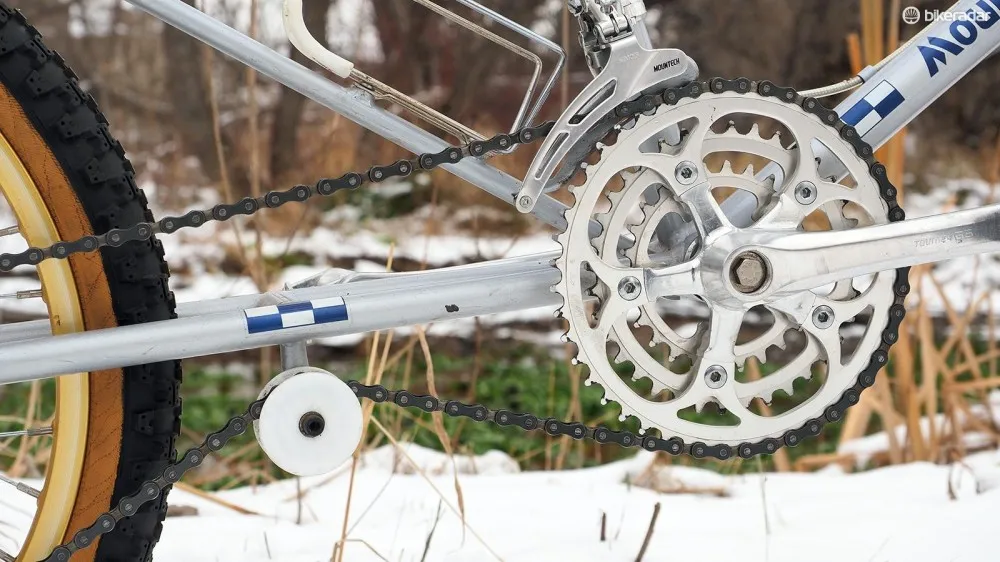
Between the three chainrings, surprisingly large freewheel sprockets, and tiny rear wheel, the gearing was extremely low
“The bike rides with ridiculous trail manners,” he says. “The angles are pretty far off and this makes the bike handle snappy and quick with a dragged-out rear end. The wheel sizes are designed small for acceleration purposes but the small size of the wheel won't help the bike roll over features or have clearance for anything – choke-ups and crank bashing, all day long.”
“The extra long chainstays are for stability when climbing, which in theory will help a rider climb steeper grades. Once again, the 20in rear wheel is the wrong size for the task. It makes any climb challenging due to the increased cadence of the pedals and wrong gearing. The stem clamp is not strong enough to withstand heavy forces and the torque is always an issue with older cranks and derailleurs. This makes for a flexy, unsure feel when the bike is under climbing stresses.”
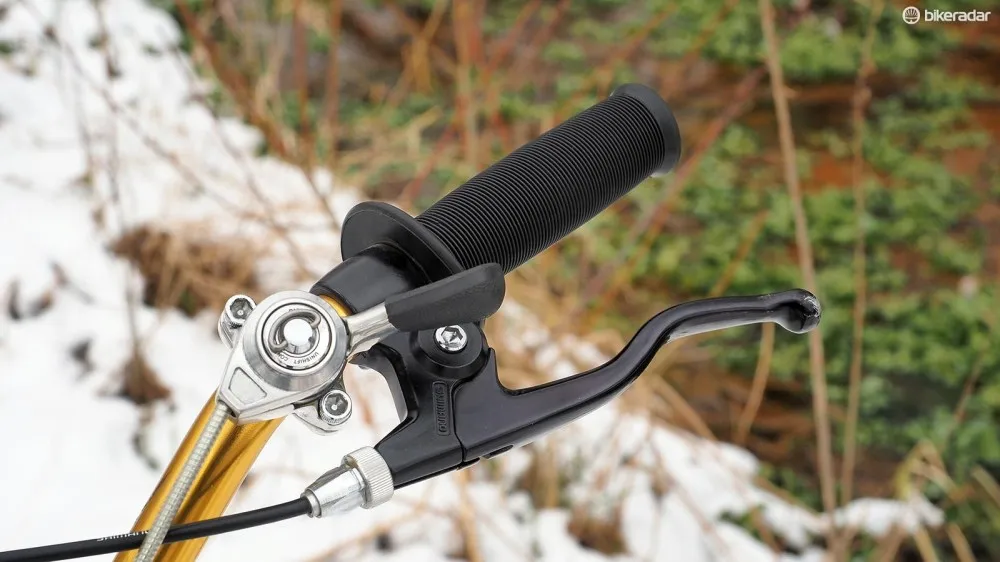
Whoa, Nelly!
Needless to say, the Mountain Machine isn’t the first bike Hartwig reaches for when heading out for a lunchtime spin.
“It really felt like a tug boat of a bicycle," he concludes.
Special thanks go out to The Pros Closet in Boulder, Colorado, for the loan of this exceptionally rare and historic bicycle.
Complete specifications:
- Frame: 1985 Velocitech Mountain Machine, size 18 M (‘modified’)
- Fork: 1985 Velocitech Mountain Machine
- Headset: Shimano 600, 1in threaded
- Stem: SR BMX
- Handlebar: Aluminum high-rise
- Grips: Turbo Grip BMX
- Front brake: Shimano BR-MC70 cantilever
- Rear brake: Shimano BR-MC70 cantilever
- Brake levers: Shimano BL-M700
- Front derailleur: Suntour Mountech
- Rear derailleur: Suntour Mountech
- Shift levers: Shimano SL-M700
- Freewheel: Suntour 6-speed, 14-32T
- Chain: Sachs Sedis 6-speed
- Crankset: Takagi Tourney GS, 170mm, with 26/36/46t chainrings
- Bottom bracket: Tange
- Front rim: Araya 24x1.75in
- Rear rim: Araya 20x1.75in
- Hubs: Shimano HB-MN72
- Spokes: Galvanized, 14g
- Front tire: Carlisle Aggressor R/A, 24x2.125in
- Rear tire: Carlisle Aggressor R/A, 20x2.125in
- Saddle: Vetta
- Seatpost: SR Laprade
- Pedals: SR SP-100AL
- Total weight: 13.84kg (30.51lb)


